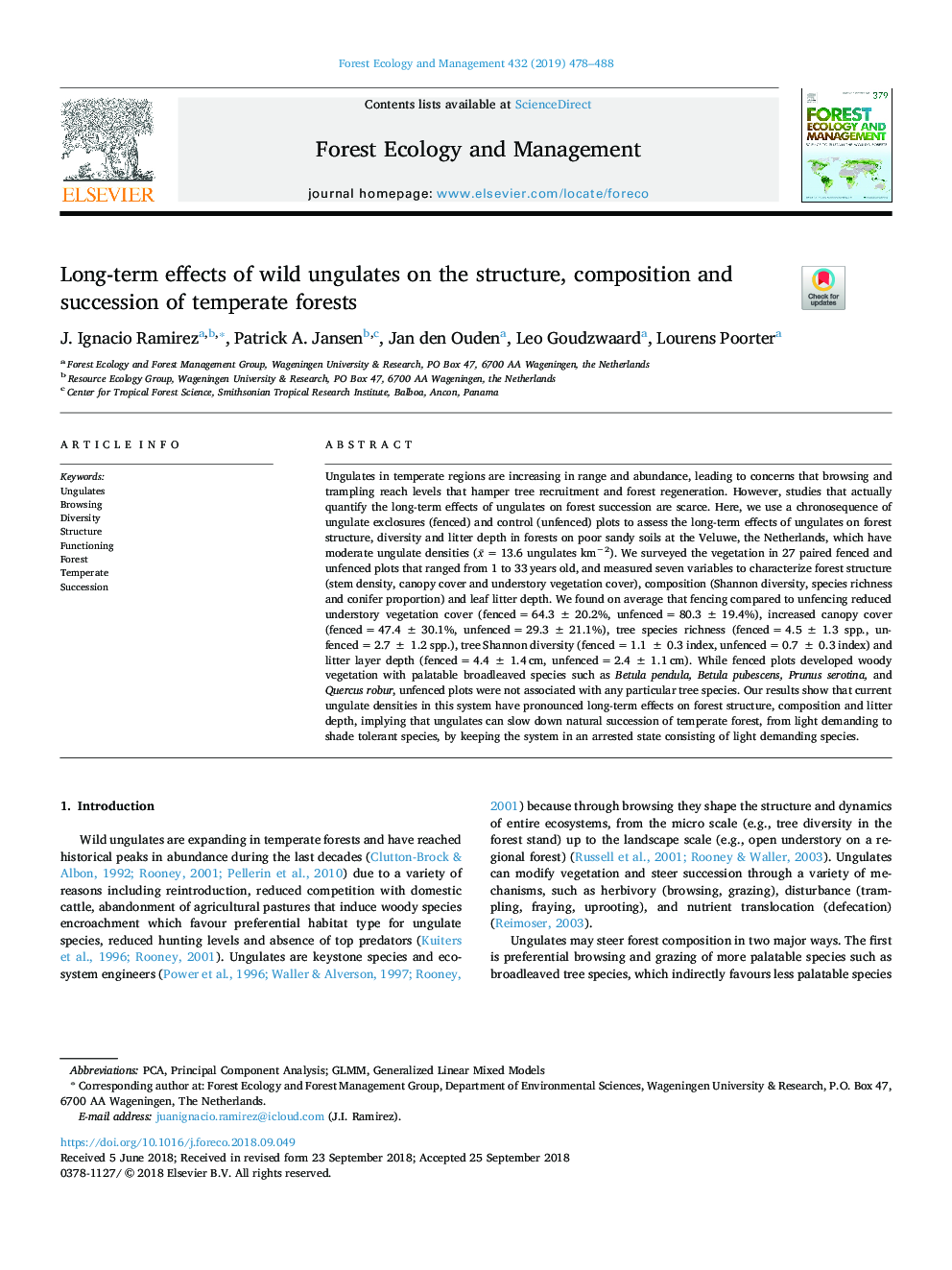| کد مقاله | کد نشریه | سال انتشار | مقاله انگلیسی | نسخه تمام متن |
|---|---|---|---|---|
| 11028365 | 1662523 | 2019 | 11 صفحه PDF | دانلود رایگان |
عنوان انگلیسی مقاله ISI
Long-term effects of wild ungulates on the structure, composition and succession of temperate forests
ترجمه فارسی عنوان
اثرات دراز مدت صاف وحشی بر ساختار، ترکیب و جانشینی جنگل های معتدل
دانلود مقاله + سفارش ترجمه
دانلود مقاله ISI انگلیسی
رایگان برای ایرانیان
کلمات کلیدی
موضوعات مرتبط
علوم زیستی و بیوفناوری
علوم کشاورزی و بیولوژیک
بوم شناسی، تکامل، رفتار و سامانه شناسی
چکیده انگلیسی
Ungulates in temperate regions are increasing in range and abundance, leading to concerns that browsing and trampling reach levels that hamper tree recruitment and forest regeneration. However, studies that actually quantify the long-term effects of ungulates on forest succession are scarce. Here, we use a chronosequence of ungulate exclosures (fenced) and control (unfenced) plots to assess the long-term effects of ungulates on forest structure, diversity and litter depth in forests on poor sandy soils at the Veluwe, the Netherlands, which have moderate ungulate densities (x¯â¯=â¯13.6 ungulates kmâ2). We surveyed the vegetation in 27 paired fenced and unfenced plots that ranged from 1 to 33â¯years old, and measured seven variables to characterize forest structure (stem density, canopy cover and understory vegetation cover), composition (Shannon diversity, species richness and conifer proportion) and leaf litter depth. We found on average that fencing compared to unfencing reduced understory vegetation cover (fencedâ¯=â¯64.3â¯Â±â¯20.2%, unfencedâ¯=â¯80.3â¯Â±â¯19.4%), increased canopy cover (fencedâ¯=â¯47.4â¯Â±â¯30.1%, unfencedâ¯=â¯29.3â¯Â±â¯21.1%), tree species richness (fencedâ¯=â¯4.5â¯Â±â¯1.3 spp., unfencedâ¯=â¯2.7â¯Â±â¯1.2 spp.), tree Shannon diversity (fencedâ¯=â¯1.1â¯Â±â¯0.3 index, unfencedâ¯=â¯0.7â¯Â±â¯0.3 index) and litter layer depth (fencedâ¯=â¯4.4â¯Â±â¯1.4â¯cm, unfencedâ¯=â¯2.4â¯Â±â¯1.1â¯cm). While fenced plots developed woody vegetation with palatable broadleaved species such as Betula pendula, Betula pubescens, Prunus serotina, and Quercus robur, unfenced plots were not associated with any particular tree species. Our results show that current ungulate densities in this system have pronounced long-term effects on forest structure, composition and litter depth, implying that ungulates can slow down natural succession of temperate forest, from light demanding to shade tolerant species, by keeping the system in an arrested state consisting of light demanding species.
ناشر
Database: Elsevier - ScienceDirect (ساینس دایرکت)
Journal: Forest Ecology and Management - Volume 432, 15 January 2019, Pages 478-488
Journal: Forest Ecology and Management - Volume 432, 15 January 2019, Pages 478-488
نویسندگان
J. Ignacio Ramirez, Patrick A. Jansen, Jan den Ouden, Leo Goudzwaard, Lourens Poorter,
